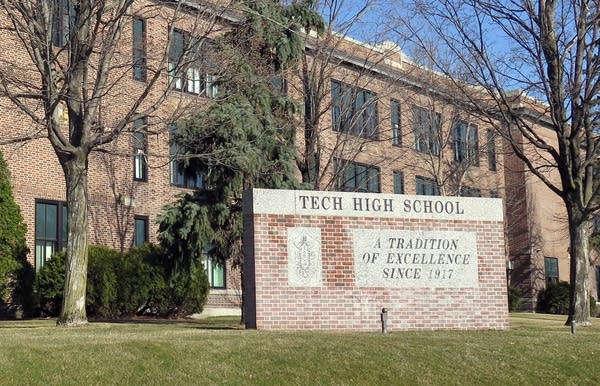School discipline method teaches students how to behave

Go Deeper.
Create an account or log in to save stories.
Like this?
Thanks for liking this story! We have added it to a list of your favorite stories.
Updated: 3:50 p.m. | Posted: 4:12 a.m.
Ten minutes before the first bell at St. Cloud's Technical High School, students stream through the door to their lockers. Principal Charlie Eisenreich stands up against the wall and watches, until a student comes in wearing a bright red baseball cap.
Eisenreich catches the student's eye. He doesn't even have to ask — the student takes off the hat.
Turn Up Your Support
MPR News helps you turn down the noise and build shared understanding. Turn up your support for this public resource and keep trusted journalism accessible to all.
This school was one of the first in Minnesota to use the "Positive Behavior Interventions and Supports" discipline program, also known as PBIS. The system uses prevention over punishment and while it's been in the state for a decade, PBIS is getting new attention in Minnesota for schools looking for effective ways to deal with discipline.
Schools using PBIS teach students how to behave just like they teach math and English. At St. Cloud Technical High School, students get behavior lessons during homeroom periods a couple times a month. The goal is to prevent bad behavior and reinforce good behavior.
Data is also key to the approach.
Staff track how many times each student gets sent to the office for discipline, and even what time of day and where discipline problems happen. They use the data to intervene early with students.
Eisenreich says when St. Cloud adopted the method, his high school saw a drop in students getting sent to the office.
"The other part of that is, when you looked at some of our climate studies that students fill out, about how they felt about being at school, dramatically improved," he said.
Behavior still isn't perfect at St. Cloud schools. But the system's success led Minnesota's Department of Education to bring training on it to districts all over the state.

So far the department says almost 30 percent of Minnesota schools have participated.
The U.S. Department of Education runs a training center as well, and trainer Rob Horner says schools in all 50 states use the approach. Horner says the key to making it work is that everyone in a school has to agree on what good behavior looks like.
"You need to define and teach a small set of really core values, things like being respectful, being responsible," he said. You've also got a set of consequences for what happens if you don't do things right."
But getting teachers across a school to agree on those consequences can be hard.
Some teachers are stricter, others have more relaxed rules. When a school starts this positive behavior method, some teachers might feel like consequences are being taken away. Others might think the new rules are too strict.
That debate over consequences has been heated in one of the state's largest school districts.
St. Paul schools have seen several student assaults on teachers over the past year, including one incident where a student choked a teacher unconscious.
The district is also trying to address racial disparities in discipline, as students of color get suspended more often than white students. St. Paul started using the positive behavior model district-wide last year as a key part of its discipline strategy. But so far not all schools have fully implemented the system.
St. Paul officials say they don't have current numbers on how many schools have the approach in place because some schools wait until the end of the year to file reports. Horner says that according to his records, it's about 40 percent.
Erin Metz, the PBIS co-coordinator for St. Paul schools, says the new approach to behavior needs three to five years to take hold in a school.
"It's a constant revisiting and looking at the needs of your students, and your families and your staff, and revising," Metz said. "It's not a black and white, it's not you're here or you're not here, it's really looking at the journey.
The St. Paul district saw suspension rates rise slightly last year.
In St. Cloud, suspension rates are down for all groups except Asian students, where the rates are flat. St. Cloud students of color still get suspended at higher rates than their white peers, but the gap has narrowed.


